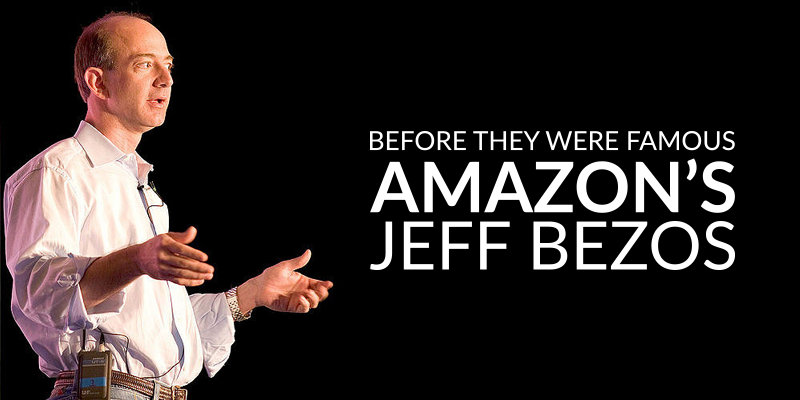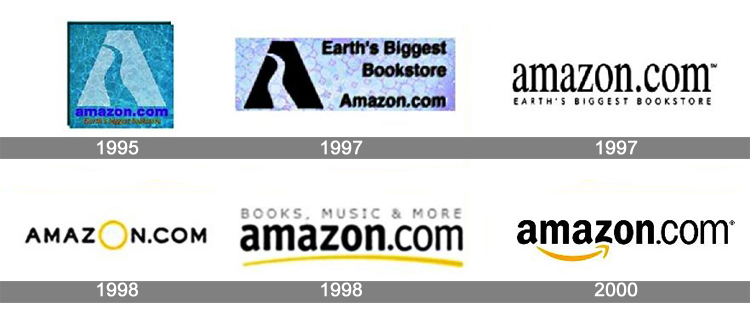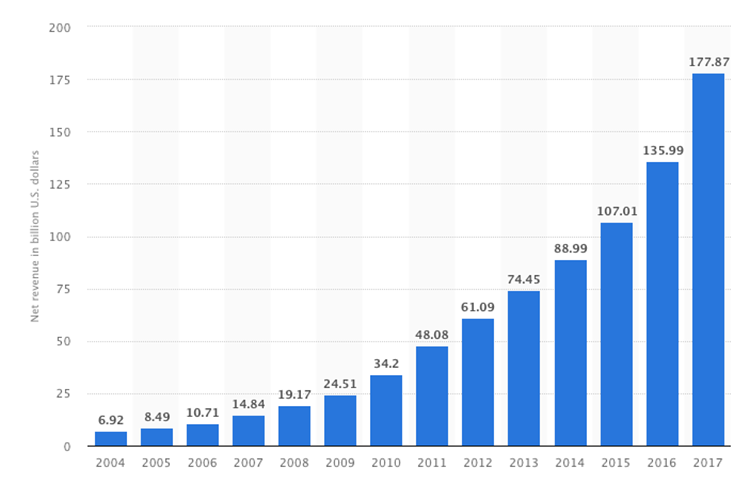
Ever since Amazon launched in 1995, not a year has passed without Jeff Bezos making headlines. Whether it was becoming the world’s richest man, announcing his divorce, or sending rockets into space – Bezos has been a fixture in both business and pop culture.
But this isn’t a gossip piece. At AppInstitute we love stories about innovation, grit, and how ideas evolve, and few stories capture that better than the rise of Amazon… This updated 2025 edition looks back at how Bezos built what started as a tiny online bookstore into one of the most influential companies in modern history, transforming e-commerce, logistics, cloud computing, and even how we build apps.
Early Curiosity and a Relentless Drive
Jeffrey Preston Jorgensen was born in Albuquerque, New Mexico. After his parents’ early divorce, his mother married Miguel “Mike” Bezos, a Cuban immigrant who adopted Jeff. From that point on, Jeffrey became Jeff Bezos — a name that would soon reshape retail forever.
Even as a kid, Bezos had a fascination with how things worked. He:
-
Took apart gadgets to understand them
-
Built science projects that won awards
-
Worked at McDonald’s while still managing to graduate as valedictorian
At Princeton University, Bezos studied computer science and electrical engineering, developing the analytical mindset that would later define his leadership. He wasn’t just a dreamer – he was a methodical thinker who wanted to understand systems deeply before improving them.
“I think that, when you think about the things that you will regret when you’re 80, they’re almost always the things that you did not do.” – Jeff Bezos
From Wall Street to the Wild West of the Web
Before Amazon, Bezos had a lucrative career in finance. He worked for firms like Fitel, Bankers Trust, and eventually D. E. Shaw & Co – a hedge fund that embraced technology long before it was cool.
At D. E. Shaw, Bezos:
-
Became senior vice-president by age 30
-
Learned how data and algorithms could drive business decisions
-
Met and married MacKenzie Tuttle, who would become a key early supporter of his entrepreneurial leap
In 1994, Bezos stumbled upon a statistic that changed his life: internet usage was growing by 2,300% a year. That’s all it took.
He made the bold decision to leave his secure finance career, write a business plan on the road from New York to Seattle, and start an online bookstore from his garage.
The “Everything Store” Was Born (But Started with Books)
In July 1994, Bezos founded Cadabra Inc. – though he soon changed the name to Amazon, inspired by the world’s largest river.
His idea was simple but revolutionary for its time:
-
Create an online store that could eventually sell everything
-
Start with a single product category (books) to test the model
-
Use clever logistical “hacks” to keep costs low and scale fast
Amazon launched in July 1995, without any inventory.
Books were purchased from distributors only after customers placed orders. Bezos and his small team even found loopholes in minimum order rules to manage cash flow creatively.
By 1997, Amazon went public.
By 1998, it had expanded into CDs, videos, and beyond.
By the early 2000s, it had already set a new standard for how people shop online.

From Books to Everything: Growth Through Experimentation
Amazon’s first years weren’t profitable but that wasn’t the point. Bezos focused on growth and market share, even through the late-’90s dot-com crash.
Key moments in early growth:
-
1997: Amazon goes public (IPO).
-
1998: Expands beyond books to CDs and videos.
-
2001: Reports its first quarterly profit after years of reinvestment.
-
Early 2000s: Survives the dot-com bust through financial discipline and innovation.
Bezos’s philosophy was simple yet radical: “Experiment relentlessly.”
Some projects failed (like Amazon Auctions and zShops), but each laid groundwork for future successes such as Amazon Marketplace and Prime.
“Experiments are by their very nature prone to failure. But a few big successes compensate for dozens of things that didn’t work.” – Jeff Bezos
The Cloud Revolution: AWS and the App Connection
By the early 2000s, Amazon faced a new challenge: scalability. Rather than build one-off infrastructure for itself, Amazon began offering its powerful computing network to others.
Enter AWS – Amazon Web Services.
-
Soft-launched in 2002, officially relaunched in 2006.
-
Introduced a revolutionary idea: renting computing power by the hour.
-
Became the backbone of modern internet infrastructure, powering companies like Netflix, Airbnb, Slack, and countless startups.
-
By 2025, AWS brings in over $100 billion in annual revenue and remains Amazon’s most profitable division.
For the app world, AWS was a game-changer. Developers no longer needed to own servers — they could deploy apps globally in minutes. This accessibility helped democratize innovation and scale the modern app economy.

Net sales revenue of Amazon from 2004 to 2017 (in billion U.S. dollars)
The Hardware Era: Kindle to Echo (and Beyond)
Amazon didn’t stop at cloud computing. In 2007, it launched the Kindle, redefining digital reading. Within hours, the first batch sold out — and by 2015, Kindle held a 53% global market share in e-readers.
Since then, Amazon’s hardware ecosystem has expanded to include:
-
Fire Tablets and Fire TV – bringing Amazon’s content ecosystem into homes.
-
Echo and Alexa – pioneering the smart home revolution.
-
Ring and Blink – shaping smart security and home automation.
These products strengthened Amazon’s connection with users, integrating shopping, entertainment, and voice technology seamlessly.
2025: From Retail Giant to AI-Driven Ecosystem
Fast forward to today: Amazon is no longer just a retailer or tech provider. It’s an AI-driven ecosystem under CEO Andy Jassy, who succeeded Bezos in 2021.
Here’s how Amazon is shaping the AI and sustainability landscape in 2025:
-
Generative AI and Alexa+: Amazon’s new conversational AI model integrates shopping, media, and personal assistance in one interface.
-
AI-powered logistics: Robots, drones, and predictive fulfillment centers are now the backbone of its same-day delivery system.
-
Sustainability push: Amazon aims to reach net-zero carbon by 2040, powered by renewable energy and electric fleets.
-
Healthcare expansion: Amazon Clinic and One Medical are redefining telehealth and pharmacy services.
-
Blue Origin: Bezos’s space company continues advancing reusable rockets and lunar missions.
Amazon’s reach now spans from your living room to outer space, but its DNA remains the same: bold ideas, fast iteration, and customer obsession.
Lessons for App Builders and Entrepreneurs
Amazon’s journey offers timeless lessons for modern founders, especially those building apps, SaaS products, or tech startups:
-
Start with one thing: focus first, then scale.
-
Work backward from the customer, not from your existing skills.
-
Experiment constantly, even failures build future foundations.
-
Leverage data: small insights often lead to big opportunities.
-
Build for the long term: innovation compounds over decades.
“What we need to do is always lean into the future. Complaining isn’t a strategy.” – Jeff Bezos
Conclusion: From Books to the Cloud and Beyond
From a garage in Seattle to a global cloud and AI powerhouse, Amazon’s story is one of persistence, reinvention, and foresight. It changed how we shop, read, build apps, and even think about innovation itself.
For every app founder or small business owner, the takeaway is simple:
Stay curious, stay customer-obsessed, and build for the future – not just for today.
FAQ: Amazon & Jeff Bezos in 2025
1. Who runs Amazon now?
Andy Jassy, former CEO of AWS, took over as Amazon’s CEO in 2021, while Jeff Bezos focuses on Blue Origin and philanthropic ventures.
2. How profitable is AWS today?
As of 2025, AWS contributes over $100 billion in annual revenue, making it one of the largest and most profitable cloud platforms globally.
3. What are Amazon’s newest innovations?
Generative AI tools (like Alexa+), drone delivery networks, and sustainability initiatives aimed at reducing emissions across global logistics.
4. How has Amazon influenced app development?
AWS transformed app scalability and infrastructure. Many of today’s biggest apps — from Netflix to Slack — rely on AWS for cloud computing.
5. What’s Jeff Bezos focused on in 2025?
Bezos is primarily focused on Blue Origin, climate initiatives through the Bezos Earth Fund, and continuing to invest in technological innovation.
Last Updated on October 20, 2025 by Becky Halls
0 thoughts on “App Builders Before They Were Famous: Amazon’s Jeff Bezos”